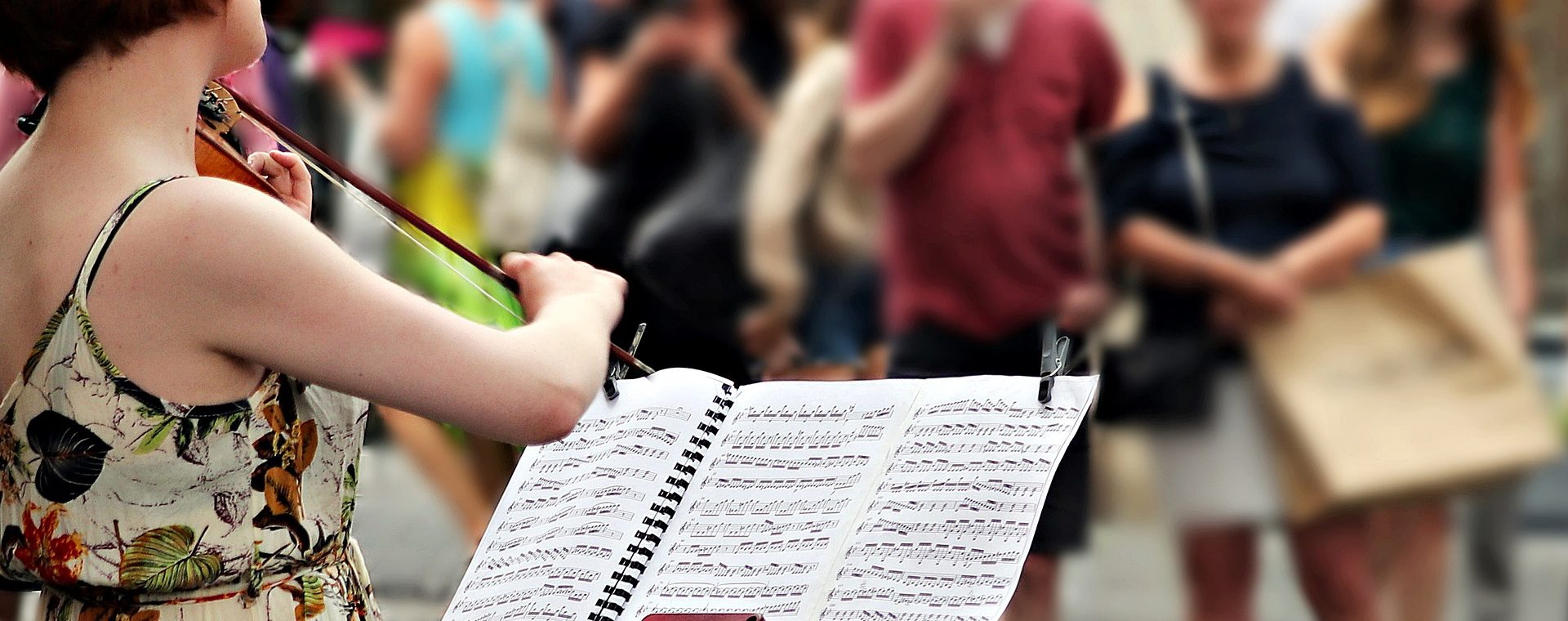
Darcy Radcliffe, director of a high school orchestra, took her music students on a journey from West Texas to Beijing. Musical performance was their passport across cultural borders. For her students, it was an empowering experience in which they explored their potential and gained an understanding of cultural and social diversity. Darcy shares her insights into the unique role of music in developing student’s confidence and creative skills.
Stepping out of the cultural comfort zone
In the summer of 2013, my high school orchestra students and I embarked on the performance tour of a lifetime. Leaving behind the wide-open fields and burnished sunsets of West Texas, we set our sights on a culture completely unlike anything we had experienced before. What would audiences think of our Texas swing, Celtic reels, and fiery fiddle tunes in faraway places like Beijing’s Forbidden City or in prestigious venues such as the Shanghai Oriental Arts Center?
While the immensity of Chinese cities and the modern architecture of their concert halls filled my students and I with wonder, the Chinese audiences were equally impressed by our brand of music. During our sojourn in China, people frequently remarked on the energy and enthusiasm emanating from these West Texas student musicians. Our dynamic approach to music-making delighted Eastern audiences! Much like the Chinese music students we encountered during our time there, we too pursued excellence and studied a rigorous curriculum. Instead of studying music just to pass an exam, however, our West Texas string players eagerly performed for the joy of it. The experience reflected a cultural exchange I will never forget. I witnessed in China that our two societies shared goals of excellence in musicianship and performance, something that crossed cultural boundaries without need of a translator.
Raising the bar to achieve excellence
By holding students to a high standard in music, they realize their full potential on and off the stage. Whether building creativity, leading in a performance, or problem-solving, the students develop confidence, self-discipline, self-motivation, and time management skills. Each element lends itself toward an identity as someone who pursues excellence as a life-long goal. By partnering novice players with established players, the less experienced musician is nurtured and encouraged to strive toward the level of the veteran. Through clearly articulating high expectations, I not only challenge the students but also give them permission to do what it takes to become excellent.
When we accelerate the learning-performing cycle students really start to shine. In many music education programs, students perform only once or twice per semester. I believe performances should be given more frequently to foster the student’s identity as a musician and expand the musical culture amongst the students, the family and our community. For example, I teach students four or five pieces of music to provide a solid music set which an ensemble may perform at any point during the year. Then, I add new music often with increasing difficulty or varied style depending on the season, student growth, and tone of the event or venue. Students grow confidence in the repeated pieces but continue to be challenged by new additions of music, which drives forward performance opportunities and elevates the skill of all performers.
Recognizing social diversity
Do you know your audience? While the music teacher’s role includes assessing student’s skill, developing their potential, and ultimately sending the student into the world, it’s easy to forget that musical performances should not only be educational but also entertaining. There’s an audience that exists outside the four walls of our classrooms. Teaching musical skills is just part of the equation; connecting to an audience is also an important variable. While I continue to teach music from composers such as Bach and Mozart, I have found that this music doesn’t necessarily represent my students or always appeal to the people in our local audiences. Our student population is truly diverse, with social identities that vary across race, ethnicity, gender, religion, class and nationality. When I began to program music that represented the student population, while featuring selections our audiences would enjoy, our student musicians became more invested and interfaced with the community in a new way. Some of our most enjoyable performances occurred in smaller communities surrounding our West Texas city. When a full crowd of local farmers and ranchers join the audience, toes are tapping, hands are clapping and even the most curmudgeonly fellow grins from ear to ear for our rendition of Faded Love by Texas music legend, Bob Wills.
Sharing music with the world empowers students. My high school string musicians experience new cultures and infuse those cultures with the very thing that makes our school, city, state and country unique: West Texas swing music combined with jazz, Celtic, country and every style in between. More than just sightseeing, by taking our music out of the classroom, a conversation has started with other cultures using the universal language of music as our medium.


